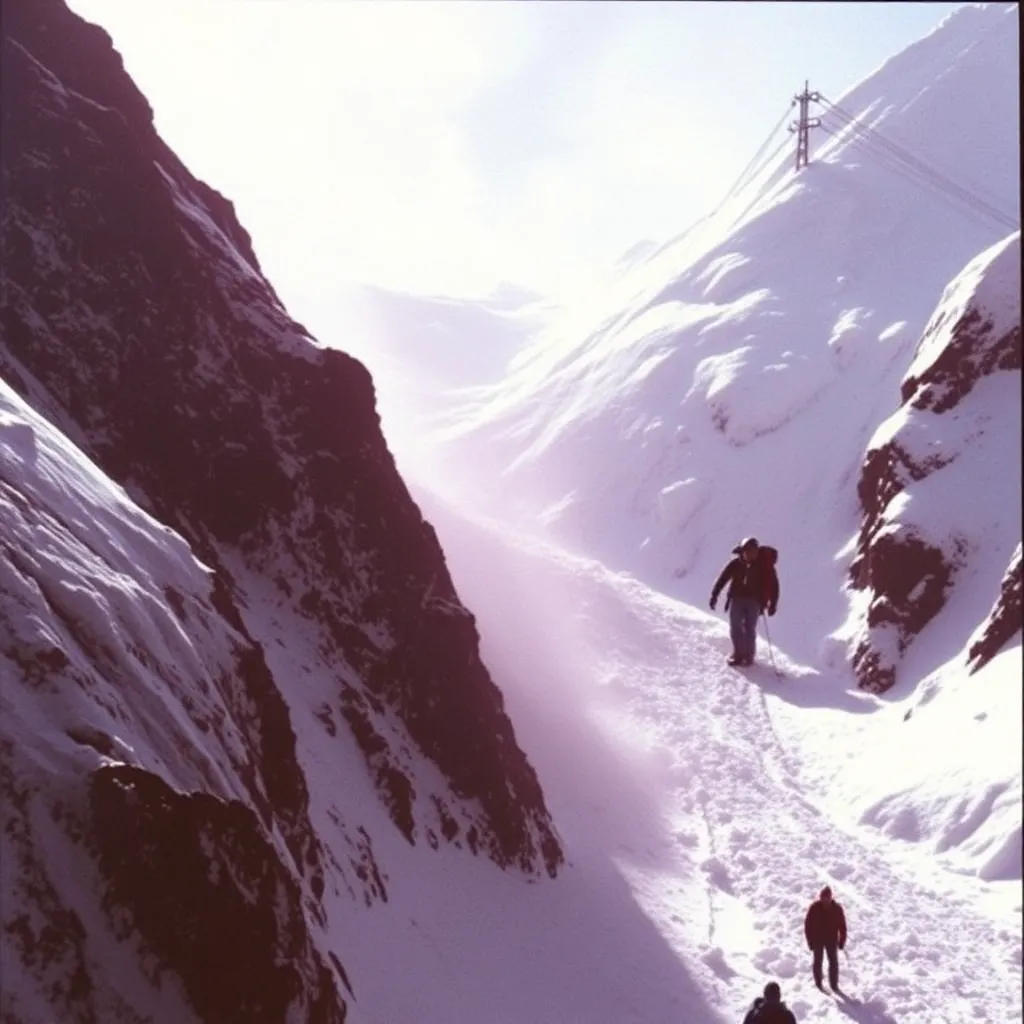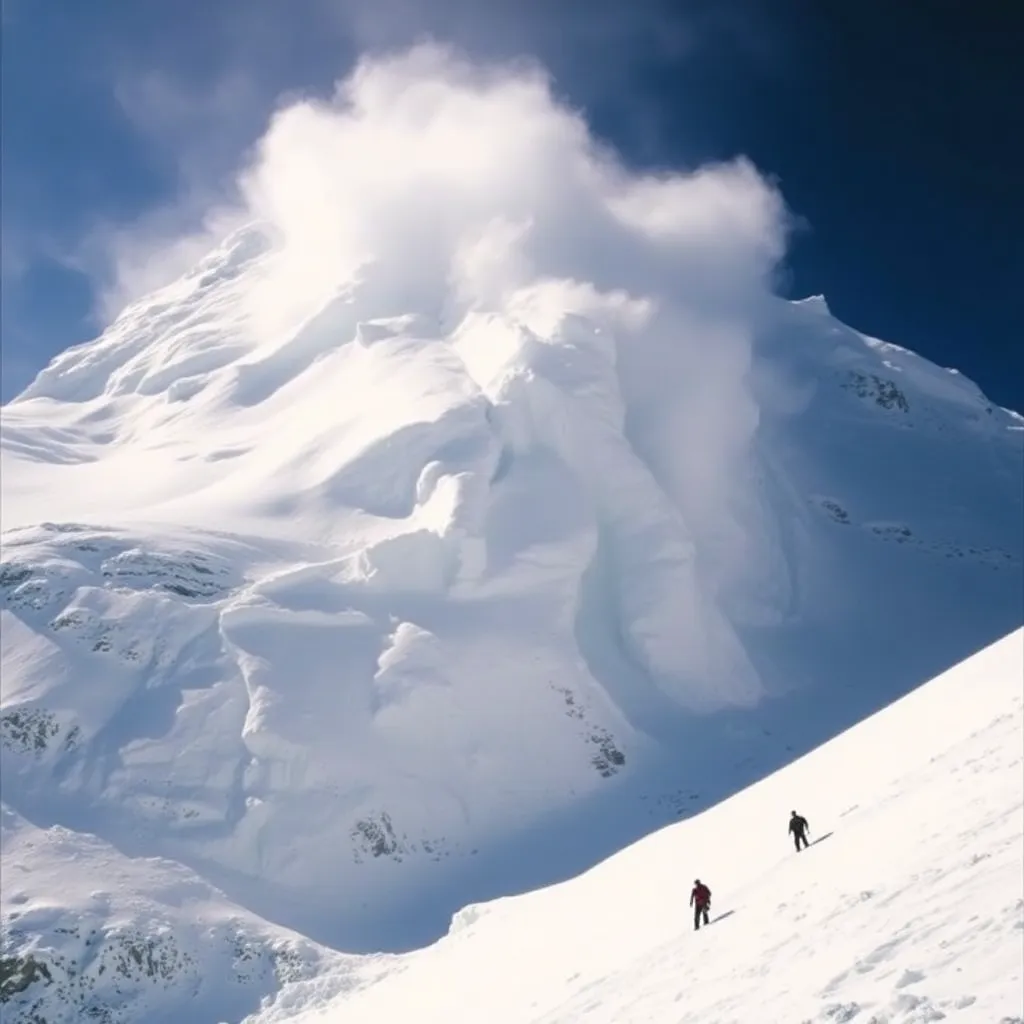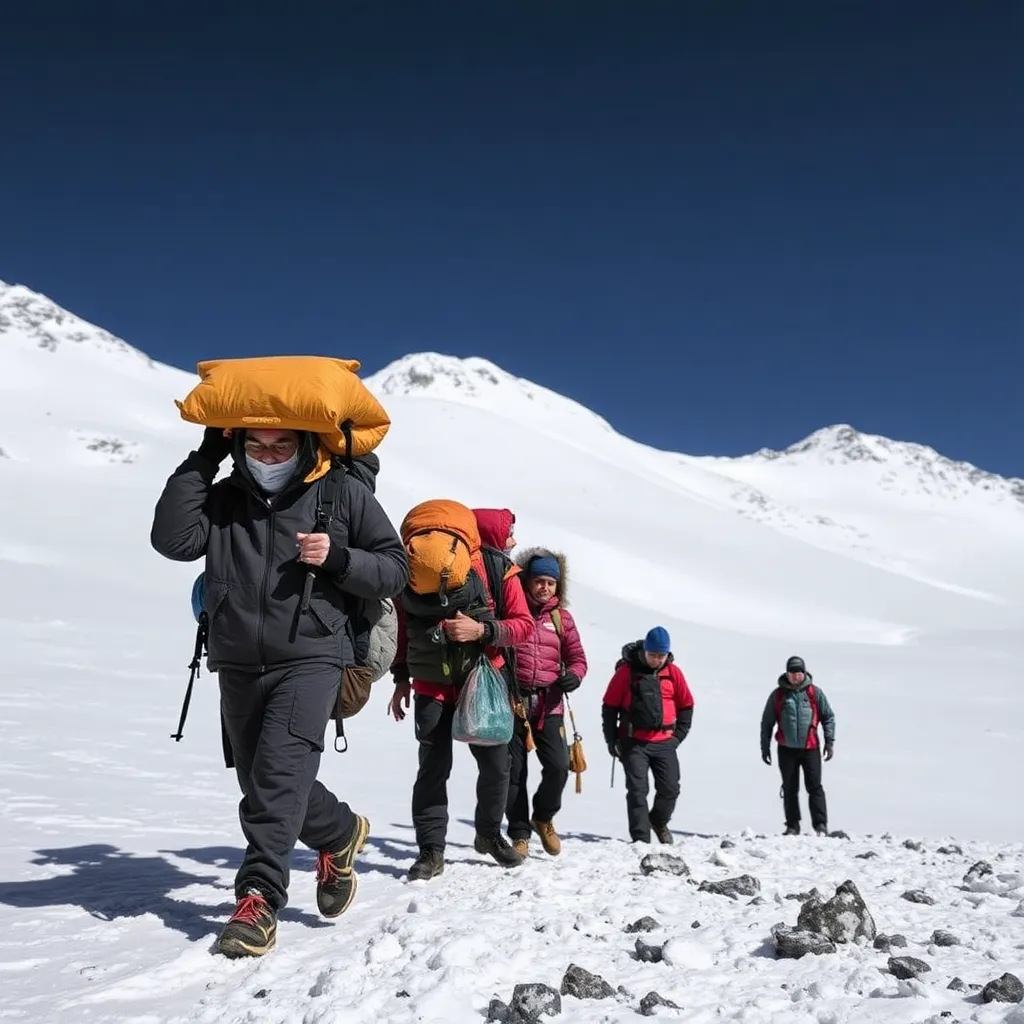The 1970 Mount Everest disaster is a significant event in the annals of mountaineering, illustrating the inherent dangers of high-altitude climbing. This disaster involved a catastrophic avalanche that claimed the lives of eight climbers from a Japanese expedition. This article provides an in-depth exploration of the events surrounding the disaster, the climbers involved, the rescue operations, and a comparative analysis of the dangers associated with Everest and other high mountains.
Background of the Expedition
- Expedition Overview: The Japanese expedition, officially known as the “Yamato Mountaineering Club,” aimed to summit Mount Everest via the southeast ridge, a challenging route that had been attempted by several teams before. The expedition was led by Masaru Tsubone, an experienced mountaineer with prior high-altitude experience.
- Team Composition: The expedition consisted of 12 climbers, including some of Japan’s most skilled mountaineers. The team was well-prepared, equipped with the latest climbing gear, and had a solid plan for their ascent.
- Objectives: The primary goal was to reach the summit of Everest, but the team also aimed to conduct scientific research regarding the mountain’s geology and ecology.

Timeline of the Expedition
| Date | Event Description |
|---|---|
| August 1, 1970 | The expedition arrives at the base camp. |
| August 5, 1970 | The team begins acclimatization climbs. |
| August 10, 1970 | Climbers reach Camp IV, preparing for the summit push. |
| August 12, 1970 | Climbers rest at Camp IV, monitoring weather conditions. |
| August 13, 1970 | A severe storm hits, leading to deteriorating conditions. |
| August 14, 1970 | An avalanche strikes Camp IV, burying climbers. |
| August 15, 1970 | Search and rescue operations commence. |
| August 20, 1970 | Recovery of bodies begins. |
Detailed Account of the Disaster
- The Climbers: The expedition included:
- Masaru Tsubone (Leader)
- Yoshio Ogata
- Katsuhiko Hirabayashi
- Akira Hoshino
- Toshio Nakanishi
- Toshio Yamauchi
- Kazuo Shimizu
- Katsuya Tsuji
- (Four additional members were part of the support team, but they were not at Camp IV during the avalanche.)
- Weather Conditions:
- The weather leading up to the disaster had been relatively stable, but forecasts indicated a sudden change. On August 13, a storm began to develop, characterized by heavy snowfall and high winds. The climbers at Camp IV were aware of the potential for worsening conditions but decided to remain in place, hoping the storm would pass quickly.
- The Avalanche:
- On August 14, at approximately 3:00 AM, the storm intensified, and an avalanche struck Camp IV. The avalanche was triggered by the combination of heavy snowfall, high winds, and the steep terrain of the southeast face. The avalanche swept through the camp with devastating force, burying tents and climbers under tons of snow and ice.
- Casualties:
- Of the twelve climbers, eight were buried by the avalanche. The climbers who perished included some of the most experienced members of the team. The four survivors were either at lower camps or had been out on acclimatization climbs at the time of the avalanche.
- Search and Rescue Operations:
- After the avalanche, the remaining climbers initiated a search for their missing teammates. However, the severe weather conditions hampered rescue efforts. Helicopters were unable to reach the site due to poor visibility and dangerous flying conditions. Ground teams faced treacherous conditions as they attempted to dig through the snow.
- Recovery Efforts:
- It took several days for the weather to clear sufficiently for a proper recovery operation to begin. On August 20, rescue teams were finally able to reach Camp IV and began the grim task of recovering bodies. The harsh conditions and the remote location made the recovery efforts incredibly challenging.


Aftermath and Impact
- Public Response: The disaster garnered significant media attention in Japan and internationally. It raised awareness about the dangers of high-altitude climbing and the need for better safety protocols.
- Regulatory Changes: In the wake of the disaster, discussions began regarding the regulation of expeditions on Everest. There was a push for stricter guidelines regarding climber experience, equipment standards, and weather monitoring.
- Legacy: The tragedy became a pivotal moment in the mountaineering community, leading to increased scrutiny regarding expedition safety and preparedness. The lessons learned from the 1970 disaster have influenced climbing practices on Everest and other high-altitude peaks.
Detailed Analysis of Contributing Factors
- Environmental Factors:
- Weather Patterns: The unpredictability of weather in the Himalayas is a significant factor in mountaineering disasters. The sudden storm that struck during the expedition was not anticipated, highlighting the limitations of weather forecasting in high-altitude environments. Climbers often rely on forecasts that may not accurately reflect the rapidly changing conditions in the mountains.
- Avalanche Risk: The southeast face of Everest is known for its steep slopes, which can be prone to avalanches, especially after heavy snowfall. Climbers must be aware of the risks associated with avalanche-prone areas and take necessary precautions.
- Human Factors:
- Decision-Making Under Pressure: The decision to remain at Camp IV despite worsening conditions reflects the psychological pressures climbers face. The desire to reach the summit can cloud judgment, leading climbers to underestimate risks.
- Experience and Training: While the Japanese team was composed of experienced climbers, the disaster underscores the importance of continuous training and preparation for extreme conditions. Even seasoned mountaineers can fall victim to the mountain’s unpredictability.
- Technological Limitations:
- Equipment: In 1970, climbing technology was not as advanced as it is today. While the team had access to quality gear, the tools for avalanche detection and weather monitoring were limited. Modern advancements in technology, such as GPS and weather satellites, have since improved safety measures for climbers.
Graphical Representation of Climbers’ Fatalities on Everest
To provide a clearer picture of the dangers associated with climbing Everest, the following graph illustrates the fatalities on the mountain over the years, including notable disasters such as the 1970 avalanche.
+------------------+------------------+
2| Year | Fatalities |
3+------------------+------------------+
4| 1970 | 8 |
5| 1996 | 8 |
6| 2000 | 5 |
7| 2001 | 1 |
8| 2006 | 3 |
9| 2008 | 2 |
10| 2014 | 16 (Sherpas) |
11| 2015 | 22 (Earthquake) |
12| 2019 | 11 |
13| 2021 | 5 |
14+------------------+------------------+
Note: This table is a simplified representation. Actual data may vary based on sources and definitions of fatalities.
Comparative Analysis of Dangers on Other High Mountains
In addition to Everest, several other mountains present significant risks to climbers. The table below compares Everest with other notable peaks in terms of height, notable disasters, and casualties.
| Mountain | Height (meters) | Notable Disasters | Casualties |
|---|---|---|---|
| Mount Everest | 8,848 | 1996 Disaster, 1970 Avalanche | 8 (1970), 8 (1996) |
| K2 | 8,611 | 2008 Disaster | 11 |
| Kangchenjunga | 8,586 | 1992 Disaster | 6 |
| Lhotse | 8,516 | 2014 Avalanche | 16 |
| Nanga Parbat | 8,126 | 2013 Disaster | 11 |
| Annapurna | 8,091 | 1970 Disaster | 18 |
Analysis of Dangers
- Mount Everest:
- Pros: Most popular and accessible among the 8,000-meter peaks, with established routes and support systems.
- Cons: High traffic can lead to delays, increasing the risk of altitude sickness and weather exposure.
- K2:
- Pros: Less crowded than Everest, offering a more solitary climbing experience.
- Cons: Known for its technical difficulty and harsh weather, K2 has a higher fatality rate, with many climbers facing extreme challenges.
- Kangchenjunga:
- Pros: Less frequently climbed, offering a more pristine environment.
- Cons: Remote location and challenging conditions contribute to its danger, with fewer rescue options.
- Lhotse:
- Pros: Shares the Everest base camp, making it logistically easier for climbers already acclimatized.
- Cons: Significant accidents have occurred, particularly among Sherpas during avalanches.
- Nanga Parbat:
- Pros Known for its stunning beauty and challenging ascents, Nanga Parbat offers climbers a unique experience in the Himalayas.
Cons: Often referred to as the “Killer Mountain,” it has a notorious reputation for its high fatality rate, especially during monsoon seasons. The mountain’s challenging weather and technical routes make it particularly dangerous.
- Pros Known for its stunning beauty and challenging ascents, Nanga Parbat offers climbers a unique experience in the Himalayas.
- Annapurna:
- Pros: Offers breathtaking views and is less frequented than Everest, making it an appealing choice for adventurous climbers.
Cons: Annapurna has one of the highest fatality rates among the 8,000-meter peaks, primarily due to its unpredictable weather and the challenges posed by avalanches and rockfalls.
- Pros: Offers breathtaking views and is less frequented than Everest, making it an appealing choice for adventurous climbers.
Lessons Learned from the 1970 Disaster
The 1970 Mount Everest disaster serves as a critical case study for the mountaineering community. Several key lessons can be drawn from this tragic event:
Importance of Weather Forecasting:
Accurate weather forecasting is essential for high-altitude expeditions. Climbers must stay informed about weather patterns and be prepared to adjust their plans accordingly. The unpredictability of mountain weather necessitates a flexible approach to climbing schedules.
Risk Management:
Climbers must develop robust risk management strategies. This includes assessing the avalanche risk in real-time, understanding the terrain, and making informed decisions about when to ascend or descend. The desire to reach the summit should never outweigh the safety of the team.
Training and Preparation:
Continuous training and preparation are vital for climbers. Teams should engage in regular drills and simulations to prepare for emergencies, including avalanches. Familiarity with rescue techniques and equipment can save lives in critical situations.
Team Dynamics:
Effective communication and teamwork are crucial in high-pressure environments. Teams should establish clear roles and responsibilities and maintain open lines of communication to ensure that all members can voice concerns about safety.
Regulatory Measures:
The disaster prompted discussions about the need for regulatory measures in mountaineering. Stricter guidelines regarding expedition organization, climber qualifications, and equipment standards can help mitigate risks associated with high-altitude climbing.
The Legacy of the 1970 Disaster
The 1970 disaster has had a lasting impact on the mountaineering community. It has influenced climbing practices, safety protocols, and the way expeditions are organized. The following points outline the legacy of the tragedy:
Increased Awareness: The disaster raised awareness about the inherent risks of climbing Everest and other high-altitude peaks. It served as a wake-up call for climbers and expedition organizers to prioritize safety.
Improved Safety Protocols: Following the disaster, many expedition companies began to implement stricter safety protocols, including better weather monitoring, risk assessment practices, and training for climbers and support staff.
Memorialization: The climbers who lost their lives in the 1970 avalanche are remembered in various ways, including memorials and tributes within the climbing community. Their sacrifice serves as a reminder of the dangers associated with high-altitude climbing.
Research and Innovation: The tragedy has spurred research into avalanche prediction and high-altitude climbing safety. Advances in technology, including improved forecasting models and avalanche detection tools, have emerged as a direct response to the lessons learned from this disaster.
Further Exploration of the 1970 Mount Everest Disaster
To provide a more comprehensive understanding of the 1970 Mount Everest disaster, it is essential to delve into various aspects that shaped the incident and its aftermath. This section will cover the psychological impact on survivors, the evolution of climbing ethics, and the broader implications for the mountaineering community.
Psychological Impact on Survivors
- Trauma and Grief:
- The survivors of the avalanche faced immense psychological challenges. The trauma of witnessing the loss of friends and teammates can lead to long-lasting emotional scars. Survivors often experience survivor’s guilt, questioning their decisions and feeling responsible for the tragedy.
- Many climbers have reported post-traumatic stress disorder (PTSD) symptoms, which can manifest in various ways, including anxiety, flashbacks, and difficulty in resuming normal life after such an event.
- Coping Mechanisms:
- Survivors often develop coping mechanisms to deal with their grief and trauma. Some may turn to counseling or support groups, while others find solace in returning to the mountains, viewing it as a way to honor their lost comrades.
- The experience can also lead to a reevaluation of personal goals and motivations for climbing. Some survivors may choose to advocate for safer climbing practices, sharing their experiences to educate others about the risks involved.

Evolution of Climbing Ethics
- Changing Perspectives on Summits:
- The disaster prompted climbers and expedition leaders to reassess the value placed on reaching summits at all costs. The mentality of “summit or bust” began to shift towards prioritizing safety and the well-being of team members.
- Ethical considerations regarding the treatment of local guides and support staff also gained prominence. The tragedy highlighted the importance of recognizing the contributions of Sherpas and other local climbers, who often face the same dangers as foreign climbers.
- The Role of Commercial Expeditions:
- The rise of commercial expeditions in the years following the disaster raised questions about the ethics of high-altitude climbing. The commercialization of Everest led to increased traffic on the mountain, raising concerns about overcrowding and the associated risks.
- Ethical dilemmas surrounding the responsibility of expedition companies to ensure the safety of their climbers became a focal point of discussion. This has led to calls for better regulations and standards within the industry.
Broader Implications for the Mountaineering Community
- Advancements in Safety Technology:
- The lessons learned from the 1970 disaster have spurred advancements in safety technology for mountaineers. Innovations in avalanche forecasting, GPS tracking, and communication devices have improved climbers’ ability to navigate dangerous conditions.
- Modern avalanche safety equipment, such as transceivers, probes, and shovels, has become standard for expeditions, enhancing the chances of survival in the event of an avalanche.
- Increased Training and Education:
- The disaster has led to a greater emphasis on training and education for climbers. Many organizations now offer comprehensive training programs that cover not only climbing techniques but also risk management, decision-making under pressure, and emergency response.
- The integration of survival skills, such as navigation and first aid, into climbing courses has become increasingly common, preparing climbers for the unpredictable nature of high-altitude environments.
- Community and Support Networks:
- The mountaineering community has become more interconnected, with climbers sharing information and experiences to promote safety. Online forums, social media groups, and climbing organizations facilitate discussions about best practices and safety protocols.
- Support networks for climbers, including mental health resources and peer support groups, have emerged in recognition of the psychological toll that climbing can take, especially after traumatic events.
Personal Accounts and Reflections
- Survivor Stories:
- Personal accounts from survivors of the 1970 disaster provide valuable insights into the human experience of facing extreme adversity. These stories often highlight themes of camaraderie, resilience, and the profound connection climbers have with one another and the mountains.
- Documentaries and interviews with surviving members of the expedition can offer a deeper understanding of the emotional and psychological aftermath of the disaster.
- Climber Reflections:
- Many climbers who have ascended Everest in subsequent years reflect on the lessons learned from past tragedies. Their experiences underscore the importance of humility, respect for nature, and the need for continuous learning in the face of ever-present risks.
- Climbers often emphasize the significance of community support and the shared responsibility of ensuring each other’s safety on the mountain.
Conclusion
The 1970 Mount Everest disaster is a poignant reminder of the unpredictability and dangers of high-altitude climbing. The loss of eight experienced climbers underscores the need for vigilance, preparation, and respect for the mountain environment. As climbers continue to pursue their dreams of summiting Everest and other high peaks, the lessons learned from this tragedy remain relevant.
By understanding the risks and implementing better safety measures, the mountaineering community can honor the memory of those lost in the 1970 disaster and work towards safer climbing practices for future generations.
If you would like to delve deeper into specific aspects of this disaster or explore related topics, please feel free to ask!
Source: Wikipedia